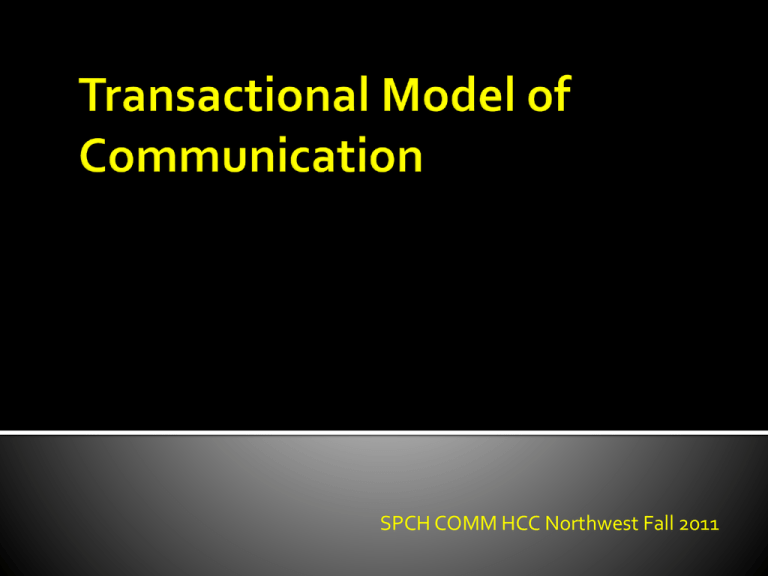Transactional Model of Communication: Presentation
advertisement

SPCH COMM HCC Northwest Fall 2011 Today’s Objective Continue to explore the communication modeling process Connect our knowledge of roles and actions in the linear model to the transactional model Recognize and apply concepts of the transactional model to our own communication episodes Pages 7-12 of your textbook. Model is Fig 2., page 9 Recall what we learned about the linear model of communication Shannon and Weaver; 1949; scholarly dialogue in business, communication, education, psychology & sociology. Critique of S&W’s linear model Process explained Highlights information transfer Identification of roles, roles are rigid Opens up process for questions about people 21 years later a more dynamic model emerged http://www.youtube.com/watch?v=c4RDCy7nBJI&feature= related Dean C. Barnlund submitted this model in 1970 Barnlund’s Transactional Model of Communication The language of communication Two-way, continuous transaction Communicator Environment Noise Meaning In a transactional model . . . We activate a dynamic, simultaneous process Participants are ‘sending’ and ‘receiving’ at all times Encoding and decoding can and will happen unconsciously Communicators give and get simultaneously Communicators come into the episode with personal experiences, personalities and traits, cultural backgrounds and relational histories The background details, along with the physical location, comprise the environment of the episode Three types of noise impact communication in the transactional model External Noise: Auditory interference Physiological Noise: Biological interference Psychological Noise: Internal noise , thought interference In 1970 Barnlund put forth the Transactional Model of Communication, a two-way, communicator and meaning centered model Some concepts are revised from the linear model, including simultaneous roles, impact of channels, types of noise, communicator background and shared meaning. HANDS ON! Grab a partner. Your team is making a visual metaphor.





